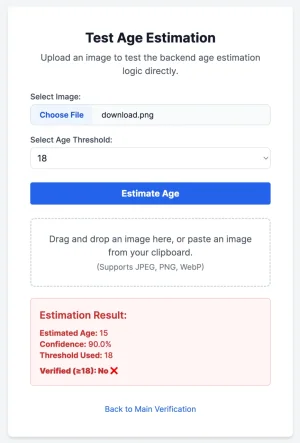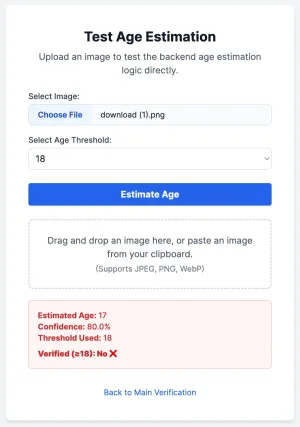However! It did give me the opportunity to test out One ID's banking option - as it seems to be tied in with Luciditi. As I have a banking app that was very simple. I tapped on my bank, it opened my banking app, I tapped in my security code. BUT - it then asked which bank account do you want to share. Which I think would be very offputting. I tapped on my current account. A few seconds later it verified I was over 18 and a button came up to "share". Which then takes you back to Luciditi.Can someone else see if they can get the Luciditi age verification to work? It won't work on my desktop. Unless the actual app will be different, it presents four options
1) Continue
2) Verify using Luciditi
3) Verify using your bank (Says OneID there)
4) Exit - I am not over 18.
Which is a confusing number of options for users to select. It would be easier if it just said "continue". If on mobile, and you press continue, it then gives three options
1) Take a selfie
2) Verify using Luciditi
3) Verify using your bank
If choosing the "Take a selfie" option it works fine. But if you choose "Verify using Luciditi" it gives you a QR code to scan. Scanning that takes you to a "small" page/window that says tap here or scan the QR code. Tapping here does nothing. Scanning the QR code isn't possible because you're already on that page having scanned the QR code. This is the same on both mobile and desktop.
Maybe if only requiring the selfie and the bank options, there would be less options displayed. I can only assume the "Verify using Luciditi" option is for people who have a luciditi app on their phones?
But no option there to scan your ID (which was mentioned). I guess this is just a demo though.
But it wouldn;t do a selfie on computer. IT did give the option to "take a selfie on my phone" though and when that was done, it approved on computer.
So @eva2000 's option was way easier - particularly on computer!
Although it says (in very small print under a drop down box) that you are only sharing your age and not banking details, the fact that it asks you to choose a bank account to "share" made me immediately think - is this safe? After tapping on a bank account it did say something about not sharing any bank details and only your age, but again that was very small on a phone screen and easily missed.
If someone doesn't have a banking app, but banks online, I think they'd have to go through a full online banking login. If they don't bank online at all - it doesn't work.
So the One ID banking option is
1) Uk only
2) Only accessible to people who do online banking
3) Nerve-wracking to users IMO



